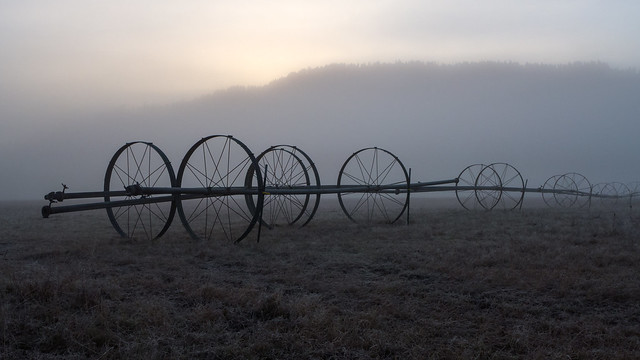A friend in my old church sent me some of her sonnets recently. She has an M.A. in Theology (Old Testament), plus another one in English. A very bright woman with some eclectic interests.
With her permission, I selected one of them to reprint here. (Does one even say “print” on a blog?) I’ve interspersed some of my seasonal photography between the poem’s three rhyming quatrains and the final rhyming couplet.
The photos get progressively warmer in color, matching the increasingly hopeful mood of the lines. But there isn’t a perfect match. After taking in the text along with my Pacific Northwest images, you might go over it again a second time, ignoring them and focusing on the slightly different farm scene the poet visualized when writing in Minnesota.
Now, before reading the Wikipedia article about sonnets, I might have supposed a “quatrain” to be something involving the transmission and driveshafts of a four-wheel drive vehicle. But even in my ignorance, I can see a certain formalistic beauty to this. Or, better put, you can hear it, when you slow down and let that silent narrator read the lines inside your head.
Alexandra writes from a devoutly religious perspective. Can you see the subtle redemptive theme she paints into the background of her Autumn harvest picture? Nicely done, I thought.
They are harvesting today. Now the sun
Shows brown earth slashed, overturned; over there
Trickling rivulets to colder fast streams run,
And like marks of passing life, branches bare

Stick out from the shivering naked trees
Around those upturned acres of soil. Cast
To that dark cut earth are leaves. The fall breeze
Has done its work so they unto the last

Are down. The gates and roads surround the field;
So I know past black dust, there is a way,
A sure path that leads to where all the yield
Of harvest is in barns from where a ray

Comes glowing, lights on the turning earth bare
To shine the fruit of hope in harvest’s air.